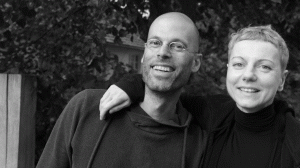The term „psychological safety” has enormous potential to become one of the buzzwords in the leadership glossary of our times. There is a broad consensus about psychological safety not just being a nice-to-have, but rather being an essential pillar of future-proof work environments. Psychological safety is a key imperative for high-performing teams and organisations as it creates a safe space for everyone’s perspective to be heard. In some sectors like healthcare, psychological safety can even become a lifesaving factor. Still, there is some room to foster a shared understanding regarding the aspects of psychological safety that might supposedly be a little more challenging in our work realities. To master these, leaders and people on the team can benefit from a certain mind- and skillset that helps to create a sustainably psychologically safe space.
If workplace culture is a microcosm of what is going on in society at large, we must learn how to better deal with multi-perspectivity
As the world becomes increasingly polarized and multi-ambiguous, we will encounter more and more different perspectives, opinions, and values at work. If we want to build truly psychologically safe environments, we should not mute but allow space for potentially difficult conversations. People can thus experience how it feels to allow and furthermore tolerate different views. Substantial differences are not necessarily threatening for one’s own opinion.
In a psychologically safe space, we can fearlessly and openly disagree with an idea, but never attack a person for their idea. According to Amy Edmondson, “psychological safety is not at odds with having tough conversations. It is what allows us to have tough conversations.”
Disagreement in teams can be the starting point for new solutions and ideas so much for the theory
Conflicts encourage a better decision-finding process or help to advance innovation. In our work reality, frequently conflict eats creativity for breakfast or as Edmund Burke once said “fear is one of the most dangerous things in the universe. Fear robs of your potential”.
When facing a conflict, we may fall into a tense state and not – like in a calm state – have access to our resources, skills, and ideas. This is a natural reaction: In situations perceived as stressful or frightening, our neurophysiological systems respond with the “fight-or-flight-response”. The perception of threat activates the sympathetic nervous system and triggers an acute stress response that prepares the body to fight or flee.
Let’s transfer this to a conflict situation and yes, we can easily do this because our bodies and minds aren’t particularly good at discerning between the threats presented by not getting your way on the project plan and, say, being chased down by a bear. When we feel threatened by a different viewpoint, we unconsciously decide whether to avoid the conflict (flight mode) or persist on our view (fight mode). Both ways, we do not constructively deal with different standpoints.
The good news is, we can learn to mindfully use the space between stimulus and reaction. This needs time and practice, and this applies for everyone in the team, so patience and generosity might be helpful. And, it is definitely worth it as studies have shown that psychological safety serves as a kind of moderator because people felt safe enough to express relevant though different ideas and lead critical discussions. In other words, there was no need to feel threatened and go into a “fight-or-flight-response” and no reason to mute difficult conversations as they were just considered as “normal” and not as a “state of emergency”.
How to create and strengthen a psychologically safe space as a leader, and what you might learn about your conception of men and the world.
-
According to constructivism, people actively construct or make their own knowledge and reality is determined by our individual experiences. The one reality or one truth does therefore not exist, we all have our own conception of the world. This mindset is very helpful when it comes to handling the co-existence of ambiguous opinions. As a leader – if you want it or not – you are a role model, and your team will experience how you deal with different perspectives in the room.
- Learn to be multipartial i.e., not to take a stand for one perspective too early (and therefore avoid a constructive discussion) or advocate your standpoint first (and therefore potentially influence your team or signal the end of the discussion). Either way, you will miss out on listening to everyone in the (virtual) room.
-
Subsequently, how do you perceive conflicts? Does the term itself even make you slightly nervous? If yes, then try to reflect, what a conflict means to you, and how you handle different kind of conflicts. Learn as much as you can about yourself in conflict situations. The next time you are facing a conflict in your team, try to apply some mediative core competencies:
- Listen to everyone in the room and give them equal space to share their version of the story (Be multipartial and do not take a stand for one perspective).
- Ask the parties involved why it is important for them to change something (this part is a lot about individual values and needs).
- Ask them what a common solution could be (and do not tell them what your solution would be, but trust that they will come up with a solution that works for them)
- Finally, invite them to brainstorm concrete activities to ensure a sustainable solution and find a common final agreement.
-
Last but not least, candour, genuine and appreciative communications foster psychological safety.
- Be clear and concise when communicating why psychological safety is important for the team and the organisation. Be thankful for every opinion shared.
- Develop principles (in collaboration with the team) on how to lead discussions and invite everyone in the team (again and again) to share their perspective.
- Start to fall in love with critical discussions and practice to be mindful with the words you speak. As Amy Edmondson puts it “There's a respectful and compassionate way to say almost anything”.
Stephanie Heuser is co-CEO of a communications agency, leading a team of 50 people. As a trained psychologist and leader, she is a dedicated advocate for the concept of “psychological safety”, knowing the chances and challenges from her own personal experience. Besides, Stephanie is a certified systemic coach, agile coach & mediator and helps leaders and teams to uncover better ways of collaborating and to create workspaces that respond to the needs of our times.










